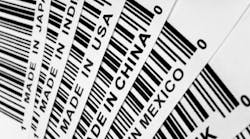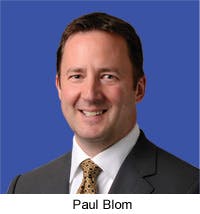The manufacturing sector’s steady growth of the last few years may have slowed down, but it still represents new opportunities for suppliers, especially as original equipment manufacturers (OEMs) examine the benefits of producing products closer to home. The reshoring trend that has professionals throughout the supply chain talking is causing many business leaders to perk up and look for new opportunities in their backyards, particularly when it comes to electronics manufacturing.
A recent PricewaterhouseCoopers survey called A Homecoming for U.S. Manufacturing? points to a potential resurgence of U.S. manufacturing due to reshoring, as more companies plan to start building more products in the United States. Earlier this year, Caterpillar announced plans to build a new plant in Athens, Ga., and agricultural equipment maker AGCO expanded its Minnesota facility to meet local demand for tractors. Over the summer, Google announced it will produce its new Nexus Q music and video player in the United States as well. These companies follow the lead of still others, such as Ford Motor Co. and General Electric, that have announced plans to bring production of certain products back to the United States from overseas markets.
Such local projects spell opportunity throughout the supply chain.
“I see these as significant opportunities, particularly within our electronics manufacturing sector,” says Paul Blom, executive vice president of operations for contract manufacturing firm SMTC Corp., which has facilities in North America and China. Blom points to lower- to medium-volume and medium- to higher-mix product families as the best candidates for local manufacturing. He also emphasizes the key role suppliers and contract manufacturers play in the process.
“In working with OEMs, it will be important to come to the table with analytical and business-case skills [that] help the OEM see the value in ‘local’ or in-market manufacturing opportunities. This will need to be followed up with flexible and efficient manufacturing execution and delivery,” he explains.
Blom and others say the trend extends well beyond North American borders, as companies everywhere begin to re-examine the total cost equation and consider where it makes sense to bring production activity back into the local fold. Logistics, supply chain risk, and ease of doing business all come into play, creating conditions that can help bring business back—or, more likely, keep less of it from leaving in the first place.
Going Local
The PricewaterhouseCoopers survey identifies seven factors that could drive a sustained manufacturing renaissance in the United States: transportation and energy costs, currency fluctuations, U.S. market demand, labor costs, U.S. talent, availability of capital, and the tax and regulatory climate. The study also points to the mitigation of supply chain disruptions as a key reason companies may want to bring research and development as well as production activity closer to home.
Industries most likely to benefit from reshoring to the United States include chemicals and metals, where transportation and energy costs make local production more attractive. Heavy equipment and machinery fit this bill as well. All else equal, the survey explains, manufactured goods with lower value-to-weight ratios are generally less able to absorb the higher transportation costs of manufacturing overseas and shipping to the United States. Curbing such costs can also cut down on lead times, reduce inventory levels, mitigate some currency risks, and give companies more control over intellectual property.
“People wrongly focused on unit price rather than total acquisition cost,” Fletcher explains, noting that the lower labor and materials costs associated with offshoring often don’t match up to the cost of having eight weeks of inventory in the form of finished goods on its way back to a warehouse in Europe, particularly now that transportation and energy costs are rising, as the PricewaterhouseCoopers survey points out.
“People have finally woken up to that,” Fletcher adds. “[Especially] if you’re making really bulky or heavy products, they’re coming back because transportation costs are going up.”
In Europe, much of the returning business is going to contract manufacturers in Eastern Europe, and the rest of the continent remains focused on research and development. And although Fletcher agrees the reshoring trend is real, he says it remains more a topic of conversation than action.
“I think there is probably more discussion about it and less of it really happening,” Fletcher says. “A lot went out and a very small amount has come back. I think what will happen in the future is that not so much will go out in the first place.”
SMTC’s Blom agrees, pointing to a growing emphasis on localization worldwide.
“SMTC continues to grow in North America and Asia [because] each plant location provides unique benefits to our OEM customers,” he says. “The larger dollar impact of near-shoring is showing up within our Mexico operations, where we have seen steady growth in new customer and product introductions. [But] our growth in China is driven both by cost and by OEM requirements for Asia localization. Again, this is where the next step in the supply chain is in China—or Asia, more broadly.”
“OEMs with a combination of a wide variety of SKUs and perishable market demand due to threat of competition or substitution will be leading the overall trend,” he says. “These OEMs will not only look at the total landed cost equation, they will also look at the gross margin benefits from improved market share capture in North America.”
A British Success Story
Although more U.S. manufacturers are starting to bring production back to North America, a recent pointed example of the reshoring trend is happening right now in England. Over the summer, electronic components distributor Premier Farnell/element14 announced a new deal with Sony UK to manufacture the British-designed Raspberry Pi computer on English soil for the first time. The Raspberry Pi is a credit-card sized computer aimed to spur young people’s interest in computer programming. Since its launch earlier this year, professional computer programmers, engineers, and hobbyists alike have clamored to get their hands on one.
The Premier Farnell/element14 deal will utilize Sony UK’s state-of-the-art lean manufacturing techniques to produce more than 300,000 units for customers around the world, adding up to 30 new jobs at the company’s plant in Wales. To date, the Raspberry Pi has only been manufactured in China, where some production will remain even with the UK deal in effect. Premier Farnell’s Mike Buffham says the project exemplifies the reshoring trend and proves that volume manufacturing can still be done in Europe. What’s more, he says the Sony deal is serving as a jumping off point for similar discussions with other manufacturing partners and that he hopes it leads to more local projects for companies throughout the supply chain in Europe and North America.
“I think this definitely gives new opportunities for the distribution industry,” says Buffham, global head of electronic design engineers for Premier Farnell. “It’s not been easy, but the experience we’ve gained going back to February last year [when the Raspberry Pi was launched] is that it’s possible to build a volume computer in the U.K. That means there’s opportunity for volume contract manufacturing across Europe, and I’m sure in North America as well—and therefore, there are distribution opportunities.”
Much of the success behind the Raspberry Pi project has to do with local pride. Buffham says there was always a desire to build this product where it was designed—and where there’s a big market for sales. That desire helped spur the process along as Sony, Premier Farnell, and the Raspberry Pi Foundation (developers of the computer) worked hard to make the project a reality despite the economic challenges that stood as a key barrier. The ease of doing business in their backyard was a big plus.
“The value of having this close to home is that I can jump in the car and drive to Sony [for a meeting] and fix things within hours,” Buffham explains. “Things like that actually have much higher value to them than just the dollars and cents. We’ve had to work really hard to make this happen, but the fact that we speak the same language and we’re in the same time zone makes a big difference.”
Of course, Premier Farnell is a global company with the reach and resources to do business just about anywhere. But more and more, knowing when to use the global versus the local approach is becoming an important part of the business equation.
“There are times when the global footprint means it makes sense to do things globally—where you learn to do it once and then replicate it globally,” Buffham explains. “But there are other instances where we want to be close and local.”










